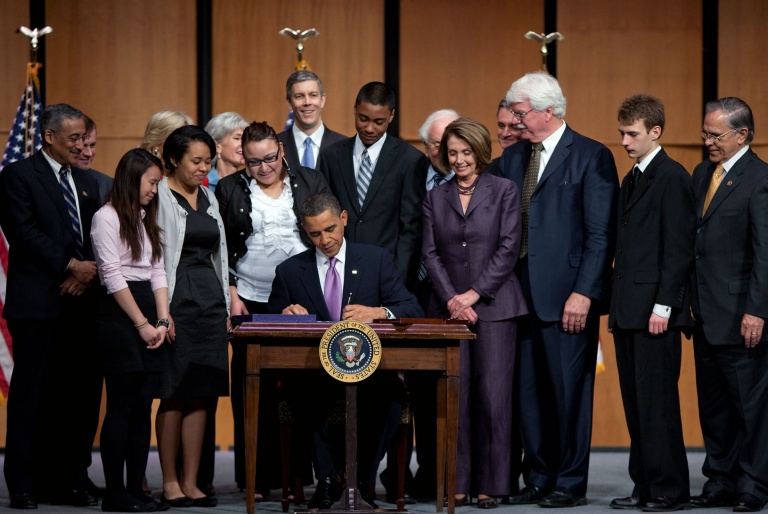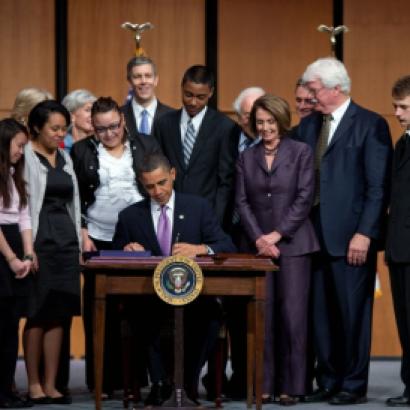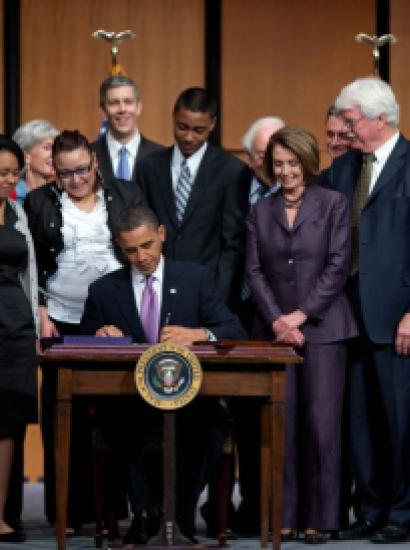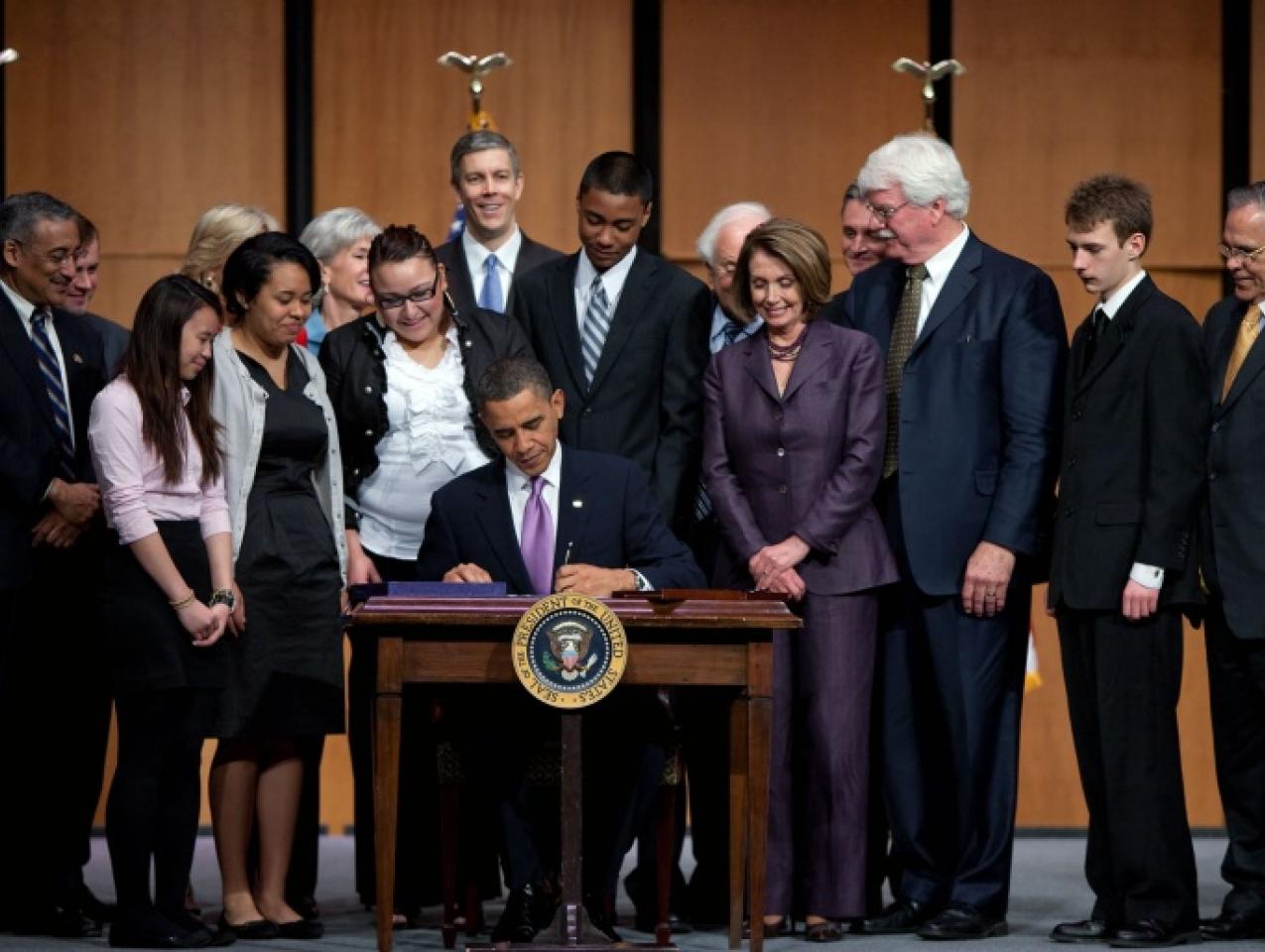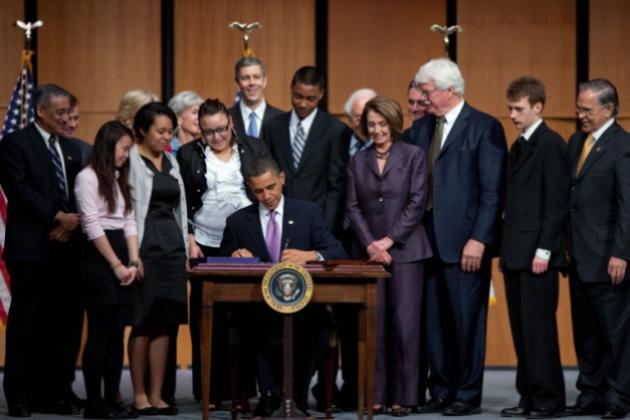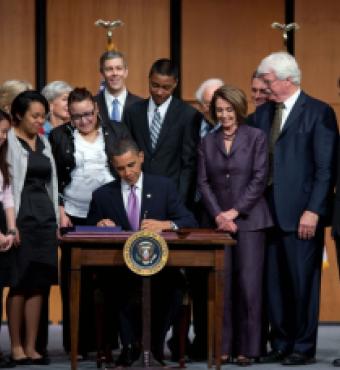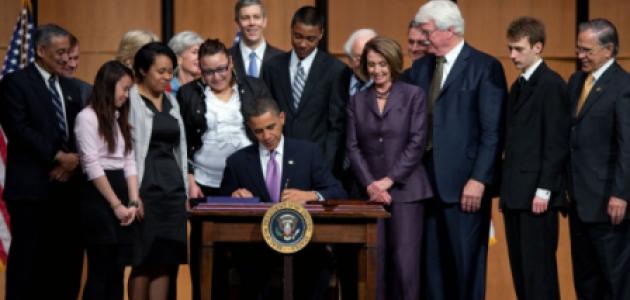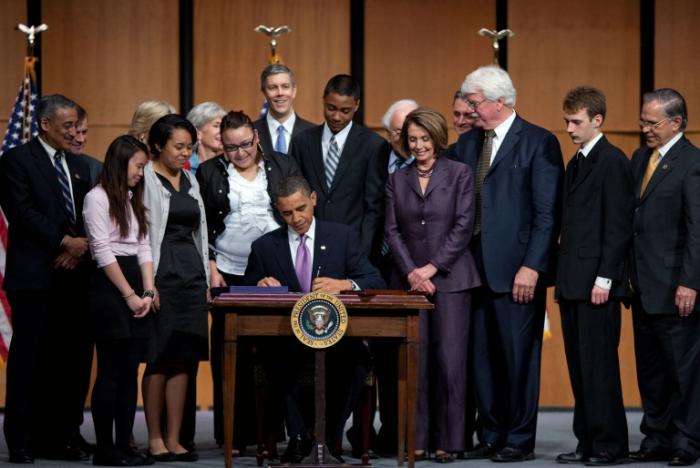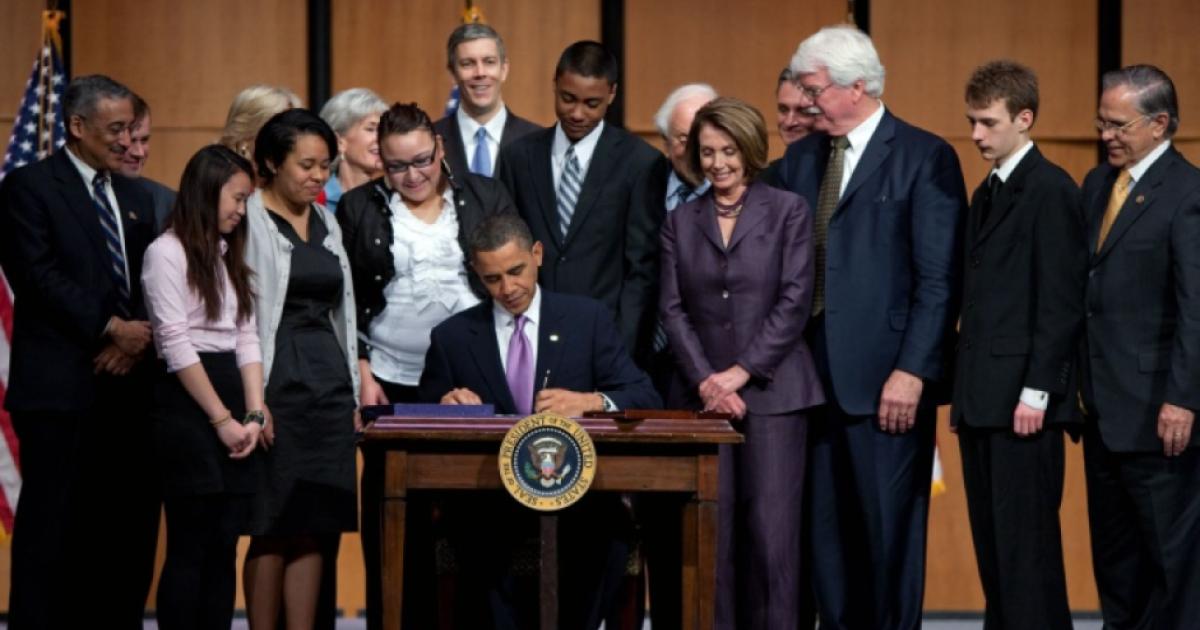- Law & Policy
- Politics, Institutions, and Public Opinion
Earlier this week, President Barack Obama signed a much anticipated executive order that prohibits all government contractors from discriminating against their gay, lesbian, bisexual, or transgender employees. This anti-discrimination requirement will be set down in the contracts between the government and the contractors. After fierce lobbying from both sides, the President also decided that he would not exempt religious groups from this order. His order comes hard on the heels of the highly divisive Supreme Court’s decision in Burwell v. Hobby Lobby, where the Supreme Court, by a five-to-four vote, struck down the healthcare law’s contraceptive mandate under the Religious Freedom Restoration Act (RFRA).
The Government Goes Too Far
The President’s executive order creates a two-tier system whereby any firm that wants to do business with the United States government—and only those firms—must abide by the mandate; the Obama administration cannot impose the mandate by regulation on all businesses generally. But this raises a key normative question: should the government be able to impose by contract mandates on businesses that it could not impose on them by legislative action?
The popular acclaim that the President’s action has received from many gay rights activists should not be allowed to conceal the serious difficulties in this two-tier regime. No President should be allowed to do by executive order what he is unable to do by way of regulation, unless it can be shown to be essential for the operation of the government system, which is manifestly not the case here. Put otherwise, the prohibitions of RFRA should apply as much to executive orders as to regulations more generally, particularly on explosive subjects like religious freedom.
A great irony in this debate is how many people are defending the executive order: the president, they say, has greater degrees of freedom in imposing conditions by contract than he does in doing so by legislation. A common principle of contract law is that each party is the master of its own offer, and can therefore set the terms and conditions on which it is prepared to do business. The government in this sense is treated like just another person, entitled to impose whatever conditions it sees fit on its trading partners. The executive order that extends the reach of the anti-discrimination provision only extends the rule that is already in place for direct hiring by the United States. So why, the defenders ask, oppose the executive order?
This line of argument has serious intellectual difficulties. The United States government is not just another private party that should be allowed to do what it will with its resources. The United States raises revenues by taxation from all of its citizens, some of whom are passionately in favor of the executive order, and some of whom fiercely oppose it. It is not sufficient for the defenders of the new employment mandate to say that their tax dollars should not fund bigoted behaviors thinly veiled by dubious religious precedents. Nor, by the same token, is it sufficient for other taxpayers to insist that their tax dollars should not fund the activities of those whom they regard as activists bent on their destruction.
It is therefore dangerous for the President to resolve this moral dispute in favor of the activists, just as it would be for a socially conservative president to come down the other way. In both cases the preferences of the dominant party become the norm, while those of its opponents are wholly disregarded. Funding now comes from all, but it is only spent on those groups in sync with the dominant political sentiment. All-or-nothing politics is a sure way to inflame political and social divisiveness. The President’s mandate is no more acceptable than one intended to implement the reverse goal of excluding gays and lesbians from firms that do business with the government. After all, if this is a raw political struggle, then why should one side, but not the other, be able to reap the harvests of war?
A Middle Way
There is a better way, which reveals the proper place of the principle of neutrality in dealing with these explosive issues. The government should not take sides in these debates. Any individual, regardless of sexual preference or orientation should be eligible to apply for any government position, period. In dealing with public employees, members of rival political factions have to accept the foibles of their future coworkers, with whom they must work side by side. Neither side has the moral high ground from which it can exclude the other. Under this arrangement, the exact composition of the government workforce will then depend in the long run on the moral attitudes in society. As the case for non-discrimination based on sexual orientation gains traction, as it surely has, the mix of people in government employment should shift gradually in their direction—an approach that rightly puts both sides of the debate at risk of losing social support over time.
The same logic should apply to government contractors. All of these contracts should be opened up to all firms on equal terms. This position means that any firm that hires workers of all backgrounds is welcome to bid, and so to any group that has highly specialized employment requirements, including those firms that only hire gay, lesbian or transgendered workers, or those that hire co-religionists.
There are two advantages to this position. The first is that the government hiring decisions are now made exclusively on the basis of the quality and price of the goods and services supplied to the government. Every citizen, regardless of their religious or political views stands to gain from high-quality services supplied at the lowest possible cost. Any effort by government to exclude objectively qualified firms from bidding on government business imposes a financial cost borne by all in order to create gains reaped solely by the winning faction. The losers in this struggle lose both ways: they get a smaller share of a smaller pie.
The Racial Precedent
It is said in response that the issue of discrimination on the basis of sexual preference and sexual orientation is the same as discrimination on the basis of race, and that the President’s action here is little different from that which Lyndon Johnson took in 1965 under Executive Order 11246 whose key provision stated: "The contractor will take affirmative action to ensure that applicants are employed, and that employees are treated during employment, without regard to their race, color, religion, sex or national origin.”
There are two general responses to this point. The first is that this executive order, at least in its original formulation, tracked the language of the Civil Rights Act of 1964. It did not seek to impose by contract that which could not be imposed by legislative regulation, as with the current executive order, whose legitimacy is therefore drawn into doubt. Second, in my minority view, Johnson’s executive order is fully appropriate even if Title VII of the 1964 Civil Rights Act were repealed today. The argument about freedom of contract articulated above has real traction for private firms working in competitive labor markets, whereas the target of Title VII of the 1964 Act were the trade unions that received monopoly power under the collective bargaining provisions of the National Labor Relations Act.
At this point, the most efficient solution does not impose any government mandates on private firms that hire in a competitive labor market. As I have long argued, anti-discrimination laws should be used in private markets only to counter monopoly positions in public utilities and transportation, or as a way to break down the intolerable abuses of a state-imposed segregation system. The more competitive the marketplace, the weaker the case for these laws.
The Dangers of Consensus
In response, some will argue that in dealing with the question of race, the overwhelming social consensus in favor of the law is the strongest reason for its continued adoption. But the point on consensus actually cuts in the opposite direction. If 90 percent of society thinks that certain forms of discrimination are out of bounds, they can operate just as they please even if the other 10 percent operates under different principles. Certainly, the extensive practice of affirmative action programs in labor markets (which are a sensible exception to any color-blind principle) can work well even if some fraction of firms sticks to the more traditional color-blind and sex-blind employment regimes. The outsiders in these labor cases do not engage in the threat or use of force that is capable of disrupting the lives of everyone else. Having a labor market where different firms cater to different subgroups avoids the sharp discontinuities that come with political action. It also opens up a greater array of opportunity for all persons in a world rid of the heavy compliance costs that always come with the enforcement of the next anti-discrimination rule.
The more modest view of government power also prevents dangerous extensions of executive orders and administrative regulations. Thus, should the President also issue an executive order that keeps out of national parks businesses that do not hire gay and lesbian workers? Or an order that keeps these firms from participating in general job training programs? Just that position was suggested after the Boy Scouts’ victory in Boy Scouts of America v. Dale when the Boy Scouts were allowed to exclude gay scouts from leadership positions. But all public facilities, from parks to roads, should be open to all groups whatever their private views may be. The great danger of the President’s position is that it represents a creeping expansion of power whose dangers are forgotten in the activists’ rush to judgment against those with whom they disagree.







